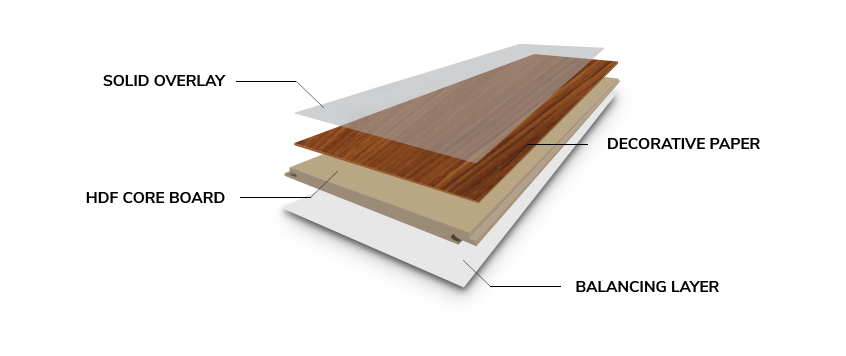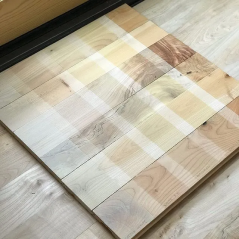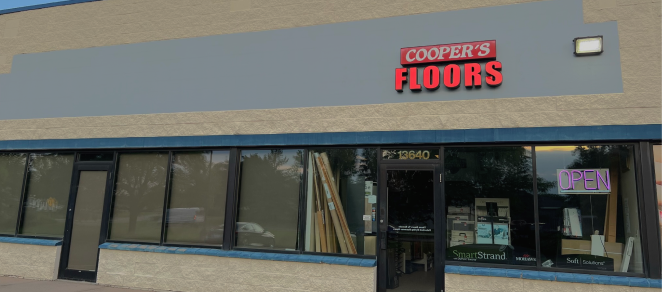A modern and affordable hard surface flooring option, laminate comes in a range of wood styles, ceramics, plus beautiful tile and stone designs that easily adapt to any space. Unheard of before the mid-1970’s, laminate floors are now the staple of millions of homes. Laminates floors have moved into high-end homes that once would have installed nothing but solid hardwood or engineered wood flooring. With innovations like deeper embossing and sharper image layers, laminate floors look better, perform better, and feel better underfoot than ever before.
What is a laminate floor?
Laminate is a synthetic composite product. It has a moisture-resistant stabilizing base layer topped with synthetic fiberboards that provide volume and strength. On top sits a photographic layer that gives the plank its design and color, along with a clear resin to make it more durable.
Laminate floors are a popular type of floor covering for homes’ living areas, kitchens, dining areas, bedrooms, hallways, and other areas that are not subject to excessive moisture.

Advantages of Laminate Wood over Solid Wood Floor
- Laminate floors come very close to mirroring the classic look and texture of hardwood boards.
- Laminate floors are about 50 percent cheaper than hardwoods.
- Laminate flooring does not ask for much in the care and maintenance department and no special products are needed.
- Laminate planks are remarkably durable and hard to damage or dent, and have fade, water, and stain resistance properties as well versus hardwood which are susceptible to cracking and need extra attention to keep them in good shape.
- Laminate flooring is much easier to install with the tongue and groove system.
- Laminate flooring is available is more styles and colors than hardwoods.

Carpet Care & Maintenance
- Easy to clean
- Scratch resistance
- Good for high-impact homes
- Relatively inexpensive

Laminate Wood Floor Installation
Laminate wood floors are joined from one piece to the next piece and form a heavy single unit, it cannot slide around. Depending on the type you buy, laminate floor planks are either snapped together or glued together.
Laminate floors need a good, solid subfloor. Foam or felt underlayment resides between the subfloor and laminate, detaching the two surfaces and providing for a softer footfall. In some instances, when the subfloor is not adequate, an intervening underlayment of thin plywood may be installed above the subfloor and below the foam underlayment.
Find Your Ideal laminate for Your Home at Cooper Floors
Shopping for new laminate can feel overwhelming. If you are interested in upgrading your home with laminate but need some help understanding your options, Cooper Floors is here to help!

Brands We Carry


